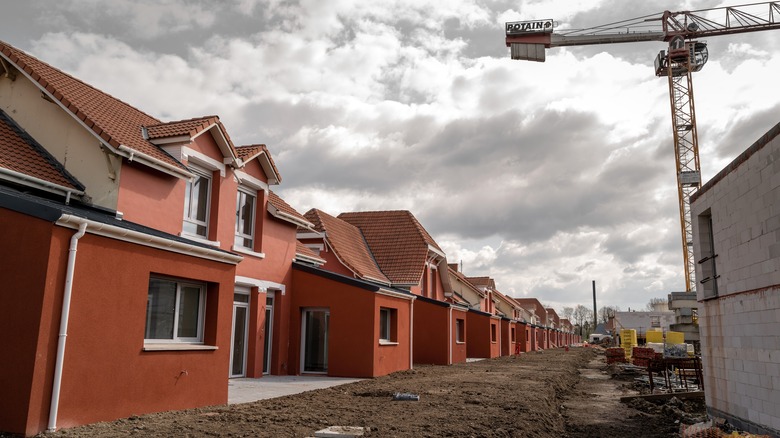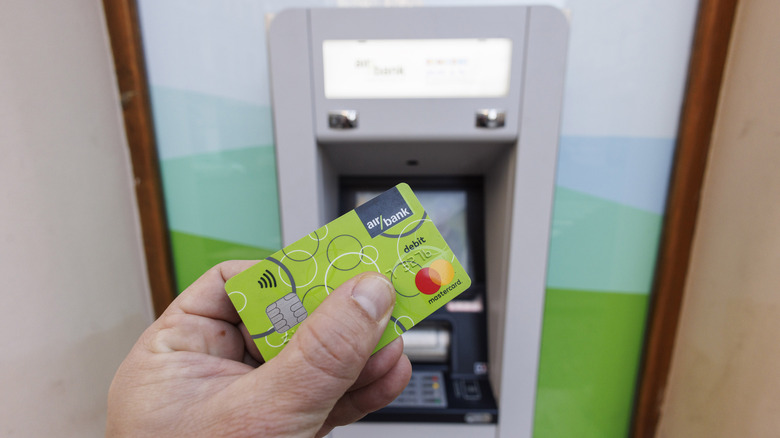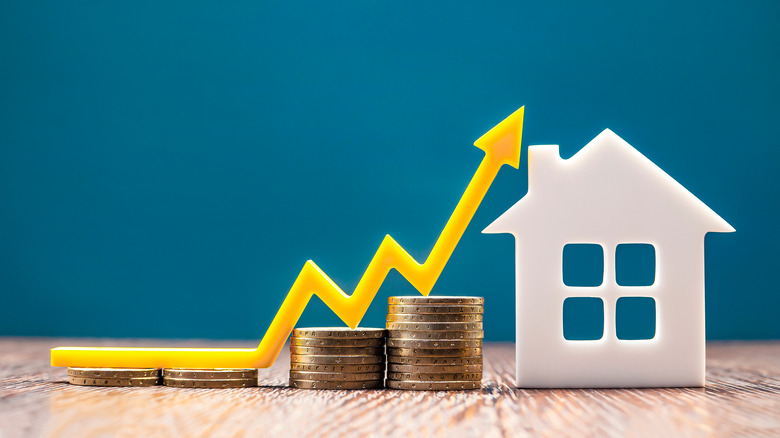What Is A Home Equity Line Of Credit?
A home equity line of credit is a type of funding that homeowners can tap into as they continue to build equity in their property and take advantage of the continually rising value of the real estate market itself. Home equity line of credit funding (HELOC) acts in a similar fashion to the consumer credit card account that millions of Americans are already familiar with. While a traditional line of credit is secured by a cardholder agreement and based on an evaluation of a borrower's credit history, HELOC financing is secured against the equity value that you own in a property and is structured in the image of a second mortgage rather than as a pure credit account.
Because of the loan terms associated with this type of borrowing, lenders are able to enjoy a more stable sense of security. This will provide you (as the borrower) with much more favorable terms than are found in virtually any other borrowing opportunity you may be considering (alternative financing rate averages sourced via ValuePenguin).
According to The Washington Post, studies continue to strongly show that Americans overwhelmingly want to own their own home rather than rent. But many homeowners don't understand the nuanced financial potency that property ownership grants. A HELOC loan might sound like a foreign language to a new owner, but it's something that's incredibly valuable to understand.
A brief background of modern real estate ownership
Home equity lines of credit offer property owners a novel way to collateralize their home. Instead of borrowing through the use of a credit score, a homeowner with a considerable ownership stake in their property can borrow against the underlying value of that home equity. As time continues to pass by after a real estate purchase, homeowners pay down their mortgage loan, generating a sliding scale of equity along the way. In a vacuum that freezes real estate pricing, a borrower will chip away at their mortgage loan throughout the 15 to 30 year term that was agreed upon at the time of purchase. They will also gain a greater percentage of true ownership (or equity) in the home with each passing month.
However, in the real world, property values rise and fall, often with great speed. This means that a new homeowner might suddenly find their assessed equity in the home to have skyrocketed. Personal finance sites (like Investopedia, Nerd Wallet, and The Motley Fool, to name just a few of the most visible) tout homeownership as one of the most important features in a growing portfolio of assets in pursuit of both diversification and overall value. Many homeowners fail to grasp the fact that a home acts as both a place to lay your head and raise a family, and as an amazingly potent investment in your financial future.
Thinking of your home as a financial vehicle for great change in your life may feel awkward at first, but it's essential that you make this mental evolution to make the most of your personal finances and lifestyle.
Homeownership is more than just the purchase of a living space
Thinking of your property as a singular share of a run-of-the-mill real estate stock can help place this in perspective: If you pay $374,900 — the average home price across the entire U.S. market, according to The Motley Fool — you might consider your home as an asset pegged with this value as the cost per share (plus any additional closing, loan origination, and other costs bundled in to the final tally).
Buying with a standard down payment of 20% will mean that you paid in a purchase price of $74,980; although this is no longer a hard and fast rule, and many lenders are more than happy to finance a home with as little as 5% down. Indeed, buyers under 30 are averaging a 6% figure these days, via The Mortgage Reports). In any case, your initial purchase will grant you an ownership stake in the asset, and if the market sees an immediate surge that boosts your home's value up by 10%, your equity percentage won't change but its monetary value certainly will (from $74,980 to $82,478 in the case of a 20% investment, or a change from $20,874 to $22,961.40 with 6% down). Over the course of many years, it's common for homeowners to see their ownership stake in total assessed dollar value eclipse both the remaining loan balance and the initial draw out of the bank entirely.
Thought of as a preeminent financial asset rather than a pure living space, it's easy to see why so many investors flock to the real estate market. With phenomenal leverage helping to make the purchase of a home easier than ever, buyers can start reaping the rewards with an investment of just pennies on the dollar. It's also why the market must be watched closely for new instability that has been largely regulated out of the space, but certainly could return given the right conditions.
The pre-collapse market was rife with over manipulation
HELOCs might seem like a product of the bygone era of market manipulation that forced housing prices to surge artificially in the leadup to the housing market collapse of 2008, but the use of this type of financing was already well-established many years earlier. The home equity loan has existed in some form since the time of the Great Depression. Additionally, a true equity line of credit financed through the collateralization of real estate property became a part of the mainstream in consumer finance in the 1970s (via The New York Times). While crisis forced financial institutions to press pause on many of their lending products, including the HELOC arrangement, these borrowing options have made their way back into the repertoire of homeowners as a result of the actual value that is presented to smart consumers who take their multifaceted roles as owner, manager, debtor, spender, and saver seriously.
Smart borrowing is always something that consumers should practice. However, in the recent past, explosive momentum of the real estate market led many eager buyers to seek out homeownership without fully understanding the costs — and financial institutions were more than willing to finance all types of borrowers in the frenzy. The U.S. market has seen an intense rebound in the 10-plus years since the global financial crisis led by subprime mortgage lending, and outlets like CoreLogic, a real estate market research firm, continue to report steady growth throughout the modern and renewed national real estate marketplace. Visual Capitalist reports a similar finding, tallying a total rise of 106% from 2000 to 2020 and graphing a stable trend of linear, upward momentum from around mid-2011 (as the market regained its feet) through to the present day.
With greater financial mobility and a rising equity value building fiscal stability for homeowners throughout virtually all local pockets of the property market, tapping into a home's equity is a great way to find burgeoning financial wellness in ever-expanding ways. The HELOC option gives you the ability to intelligently extract capital from your home without having to navigate the immediate downside of the other option available to a homeowner — namely, selling the property and then battling the market for a deal among a sea of other like-minded value extractors who are listing their homes for sale with the same intentions.
The HELOC explained: Mortgage loans versus credit card borrowing
A HELOC opportunity is a unique lending product that is sometimes viewed by credit bureaus as an installment loan rather than a traditional line of credit. Experian, for instance makes it clear that their calculation of a consumer's financial history sees these as revolving credit whereas Equifax's Knowledge Center seems to lean toward considering a HELOC in very similar reporting terms as a traditional mortgage. This means that a HELOC will factor into your credit score in varying ways across the different credit bureaus and calculation models that lenders themselves employ to make decisions. A divergence in reporting and listing isn't necessarily a good or bad thing, just a feature of the HELOC framework that should be kept in mind as it creates the potential for a gulf in consumer credit ratings across different scoring models that will be used for other, future lending decisions you may want to pursue.
Although falling broadly within the overarching category of mortgage products, HELOCs are utilized just like a credit card, making them a bridge between the best elements of both types of lending options. Instead of extracting equity from your home through a sale, profiting off of the difference between your investment cost for the equity you've created and the sale proceeds amplified by the new cost basis, a HELOC or a second traditional mortgage gives you the ability to borrow this value while maintaining a continuity of ownership in the property. However, there are some essential differences in the three overlapping financial products in this space — the mortgage, credit card, and HELOC that blends the two.
A HELOC eliminates the one-off draw that accrues higher total interest while locking in a market-leading APR
Credit cards are an omnipresent feature of consumer life. More than 191 million Americans have at least one credit card (via debt.org), and the average APR across these credit accounts, according to The Balance, is 20.55%. By contrast, a 30-year standard mortgage loan sits at 5.07%, as reported by BankRate. HELOC interest rates are comparable to the initial mortgage cost basis, but there's a benefit from the unique draw structure that allows you to utilize capital as needed rather than accruing interest on the full balance available to you. A personal (or mortgage) loan grants a lump sum payout and is subject to interest on the balance from the day that funds are deposited into your account. HELOCs are able to circumvent this by giving you the same line of credit terms that a credit card provides, but at a much higher credit line and a far lower interest rate.
The result is a lending product that combines the best elements of both the credit card and the mortgage loan while eliminating the primary drawbacks that make borrowers take pause before pulling the trigger on any new borrowing they may be considering. With a fantastic APR and the ability to utilize home equity as a revolving line of credit, consumers are in a position to continue thriving in their individual personal finance mission.
How does a HELOC work, and the steps to tapping into your home's equity
Understanding your current financial situation is the best way to begin thinking about any new loan product, including HELOC financing (via Financial Gym). When beginning a HELOC application, following the same basic blueprint for any other lending opportunity while focusing on a few key elements that are unique to the equity line of credit layout will help smooth out the application and financing process to get you the cash you need in seamless fashion.
Begin with a personal review
Financial Gym and basically any other personal finance information resource out there recommends a personal review of your financial status before approaching any borrowing opportunity. A new home equity line of credit, credit card, or personal loan will add a new debt burden to your ongoing fiscal equation, and this is something that you have to anticipate and plan for in order to make this or any other financial product work for you rather than against you.
A good place to start when considering a HELOC is with a calculation of your home's equity, as this figure will dictate the maximum you can borrow through an equity line of credit tied into the property. BankRate reports that lenders typically approve HELOC applications that exhibit a loan-to-value ratio (LTV) of at least 15% to 20%. Simplified, this means that you have paid your mortgage for long enough to own at least 15% to 20% of the equity in the home (something that's achieved immediately for those with a comparable down payment and gradually with a smaller initial figure).
Lastly, it's important to calculate your debt-to-income ratio (DTI). The Consumer Finance Protection Bureau cites a 43% debt-to-income figure as a healthy mark for those seeking new avenues of borrowing, and many HELOC providers will follow suit with similar or identical values as a cornerstone of approval for any homeowner's application. Debt-to-income is a calculation of all your monthly debt payments divided by the gross monthly income that you bring to the table. A ratio of around the 40% mark (ideally at 43% or lower) indicates a healthy cash flow that can support the weight of a new debt burden.
Understanding your existing equity, income stability and value, and current debt obligations will give you a comprehensive foundation for approaching any new financial opportunity with the greatest clarity possible.
Build a borrowing estimate
Estimating your financial needs is the next step as you embark on any new project in the home or in life more broadly. Once you've established for yourself and potential lenders that you can support a new fiscal obligation, it's time to make sense of the financial need that you are experiencing. For a homeowner looking to make renovations to their property, for instance, working with a contractor to create a complete building plan and corresponding pricing estimate can help you find greater clarity when it comes to using a HELOC or any other type of borrowing option to get the job done.
For parents seeking fiscal mobility to send a child to their dream school, public in-state tuition averages out at just over $10,000 per year with out-of-state costs more than doubling this mark at nearly $23,000, each for the 2021 to 2022 school year (via U.S. News & World Report).
Alternatively, one of the most favored remodeling project that U.S. homeowners engage in (bathroom remodeling, second only to interior painting, according to Statista) clocks in at an average cost of about $10,000 — and up to more than $30,000 for higher-end projects — as reported by Forbes Advisor.
Compare lending options to find the best rate and overall offer
Armed with all this information, you can begin to approach lenders and create a table that compares interest rates, repayment terms, loan amounts, and more. Every lender will be a little different in their lending structure and offer terms, so making comparisons is a crucial step for any homeowner in this market.
HELOC financing can be utilized for specialized fiscal projects
Homeowners target a HELOC for a number of interesting uses. One option that is popular in all corners of the United States is the use of this line of credit to fund a home improvement project.
Home improvement financing can be simplified with the help of a HELOC
Renovations add value to the property, so borrowing at a miniscule interest rate and using exactly what you need rather than guessing on a budget offers a breath of fresh air to homeowners that are often intensely stressed during a home remodel. Often, this tension is built on the balance struck between equally distasteful outcomes ending the project either with additional funds that are being charged interest or underestimating the total cost and having to dip into savings earmarked for other needs down the road.
A quasi-refinance is possible with a HELOC
Another approach that homeowners may take with their HELOC is an unofficial refinance of their first mortgage, bringing the HELOC into a de facto first position mortgage loan with better terms than the original financing arrangement. Borrowers are often able to take out a loan with the expressed intent of buying out an older debt with new money that comes at a better rate. Often, consumers refinance credit card debts with balance transfer offers, consolidation loans, and other options that may be available on the market. A balance transfer is a great way to eliminate interest for as many as 24 months (via creditcards.com). Introductory offers on new lines of credit are a potent way for a cardholder to move debt from a high-interest card into a new account that won't charge interest for an extended period, allowing for payments to go directly to the principal.
A balance transfer can reduce your credit score though. According to Chase, using a transfer intelligently is a great way to continue working to bolster your credit, but it can be enticing to continue spending on credit accounts rather than taking aggressive steps to demolish them once you've eliminated the interest that scars your long term financial wellness. The most obvious trouble that cardholders run into is a return to exorbitant, standard interest rates on the remaining balance once the introductory period ends. HELOC financing is different because it provides a minimized rate and can act as a one time quasi-transfer, or as a revolving line of credit to use as a payment method to reduce higher-interest debt with a new level of speed.
Some disadvantages to be aware of when considering a HELOC
The key issue that homeowners thinking of activating home equity through this avenue face is the naturally increased risk of losing the home to foreclosure (via Nerd Wallet). Any time you borrow money that is secured by real property, the risk of forfeiture is increased — over the inherent lack of risk that comes from simple, outright ownership. When you borrow against a property's equity, you are making an agreement to pay back the debt and promising to hand over the property in the event that you cannot maintain your end of the bargain.
Foreclosure rates are declining, but the negative outcome remains extreme
According to CoreLogic, mortgage delinquency was 3.3% in January 2022, and foreclosures sat at 0.2% (down from 0.3% in 2021). This means that the vast majority of homeowners are not in jeopardy of losing their house. However, it's absolutely vital to understand that the consequences of foreclosure are grave. While today's mortgage lenders are taking steps to ensure that all borrowers are qualified and financially stable, and that they fully understand the commitment they are making before finalizing any new lending agreement, it's still your responsibility as the borrower to maintain up-to-date payments on any debts incurred.
Unlike a delinquent credit card bill that will wrack up interest and fees while reducing creditworthiness over time, a foreclosure places a truly detrimental burden on you and your family. Losing a home means the loss of security, comfort, and stability that provide a physical foundation for everything that you and your family will undertake and achieve in life. Therefore, entering into any new lending agreement is something that should never be done lightly.
Overextension is always a problem to be wary of
Just like with a balance transfer offer, it can be tempting to overextend once you've been approved for a new financial product that helps reduce debts or provides relatively inexpensive financing for a much-needed project. If you're thinking of using new credit for smaller, routine purchasing, then a HELOC is likely not the right option for your circumstances. As you are conducting your research for a new line of credit, you'll become intimately familiar with your family's DTI, LTV, and other fiscal indicators of overall health. Keeping tabs on these values as you move forward with a HELOC or any other borrowed capital is a great way to combat the ease with which a consumer can run aground when it comes to overutilization.





